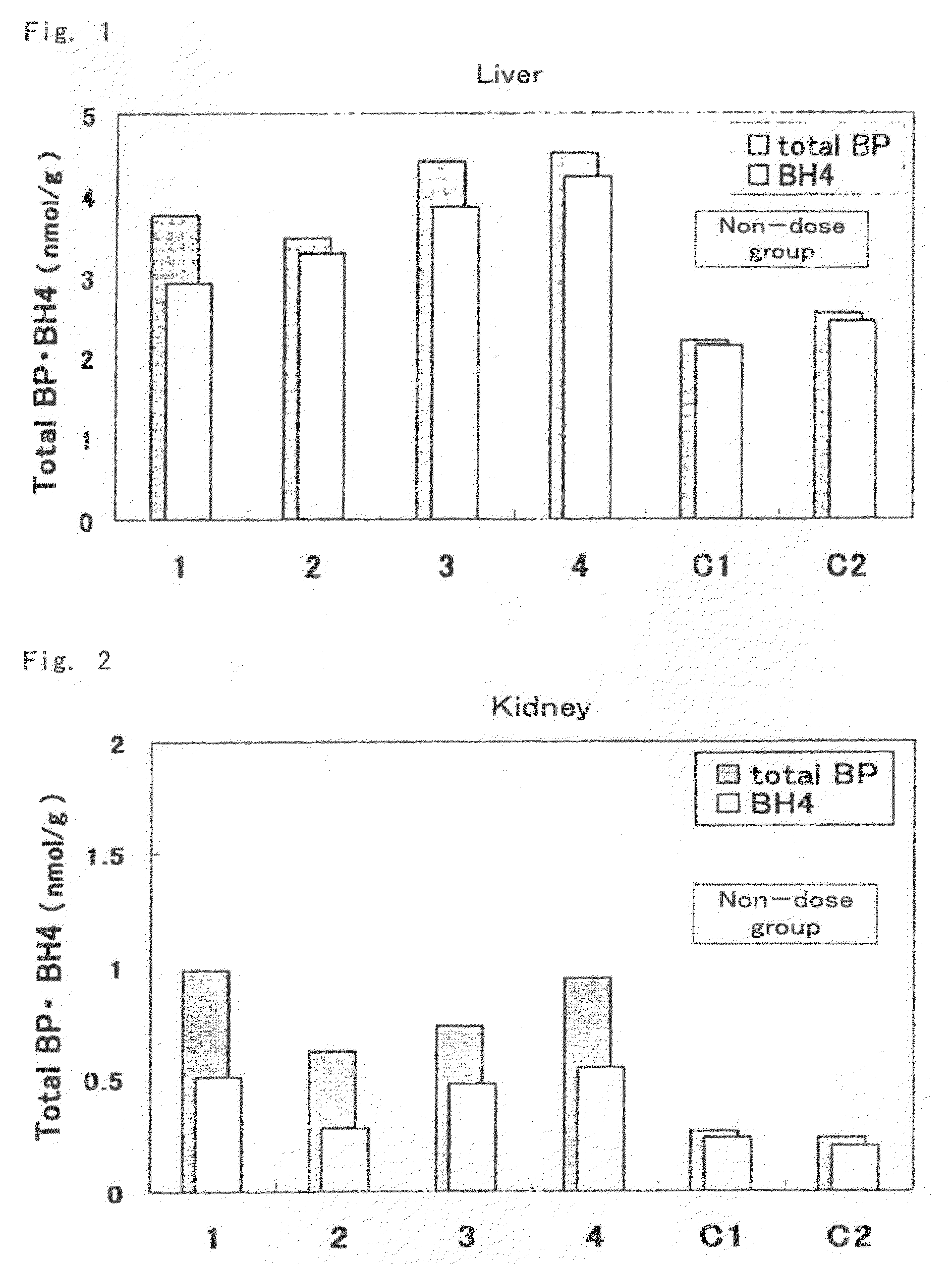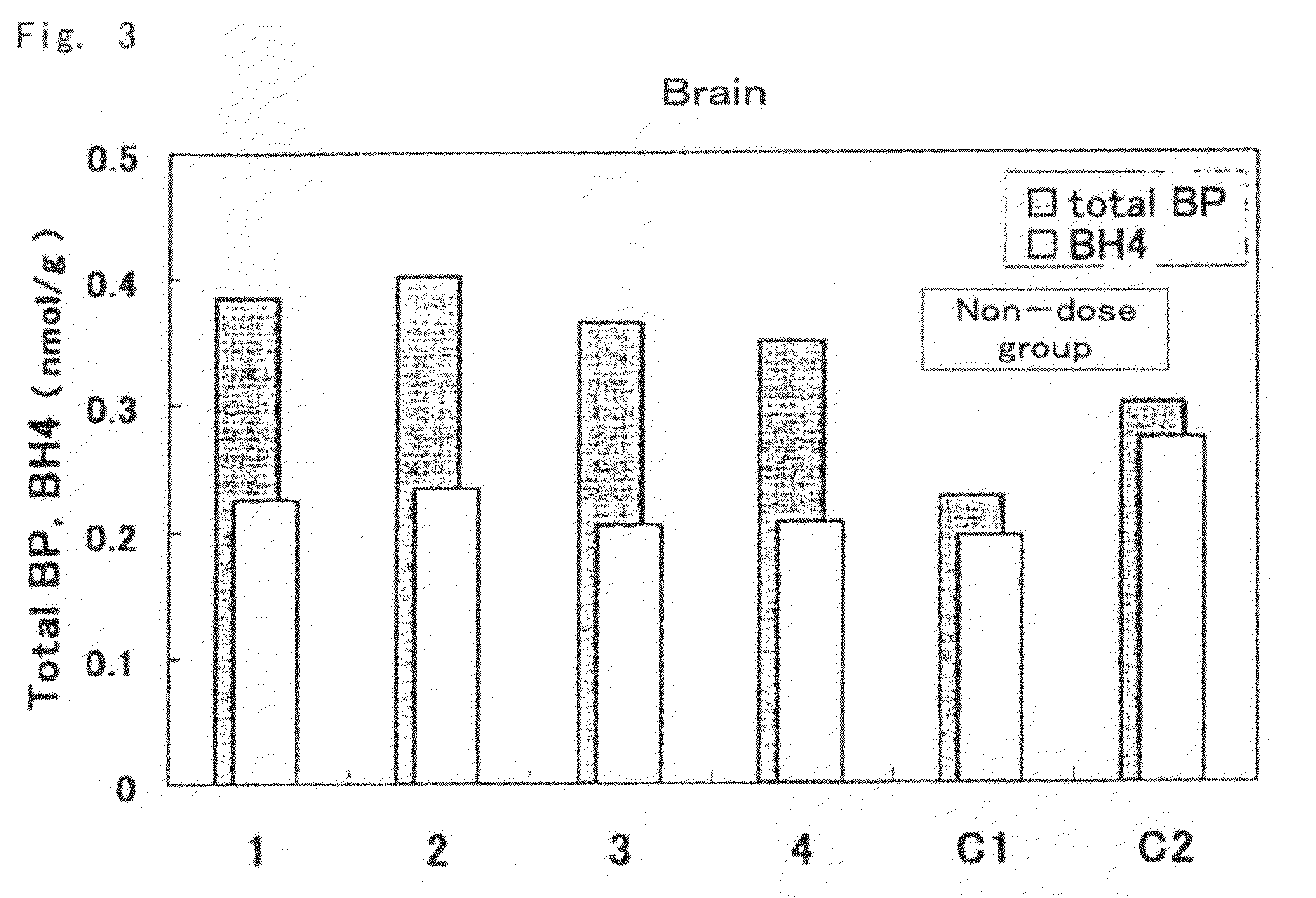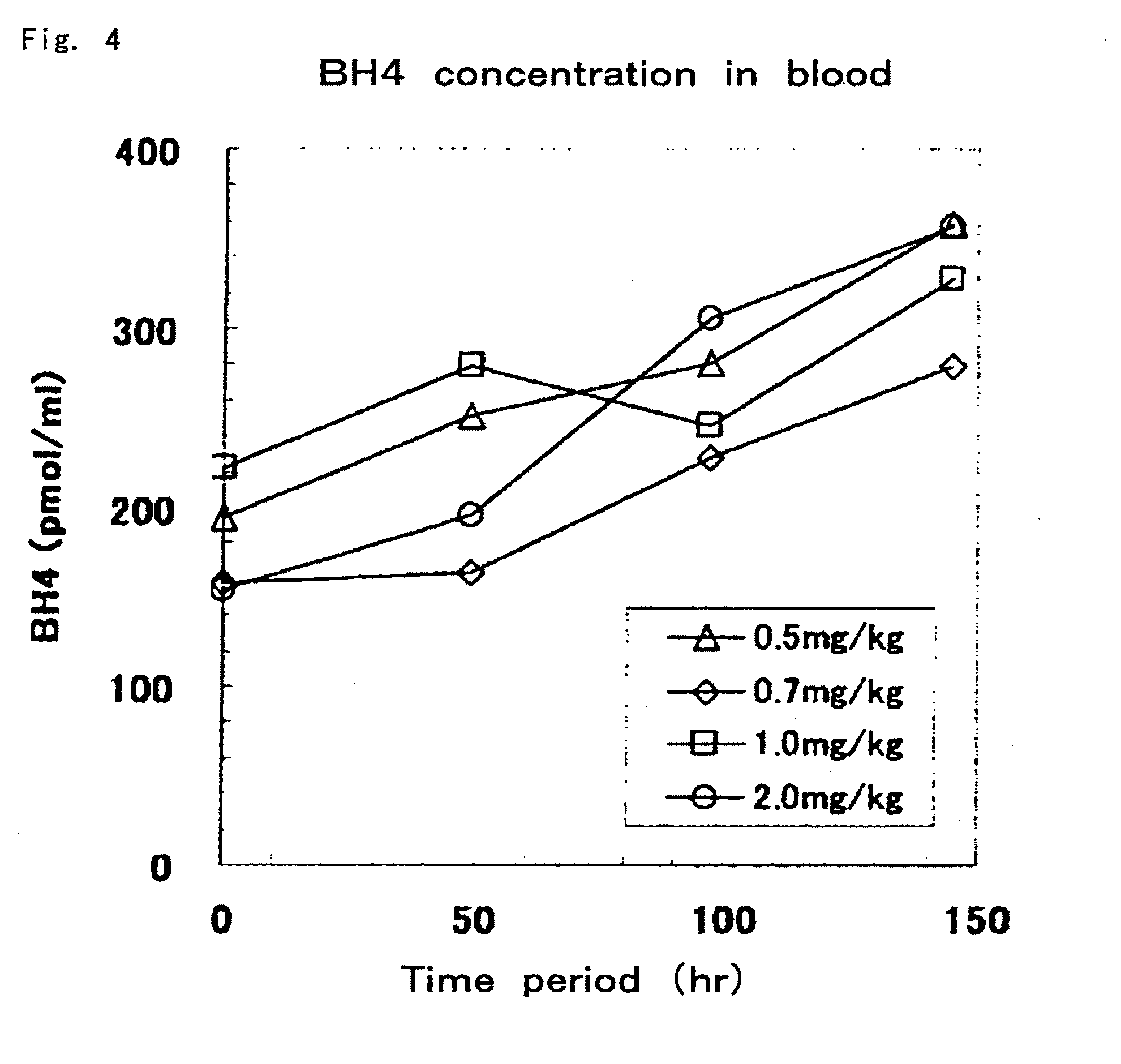Compsition Containing Biopterin and Method for Using The Same
a technology of biopterin and biopterin, applied in the field of compositions containing biopterin, can solve the problems of lack of research on the activity, and achieve the effects of reducing vascular endothelial disorders, preventing tissue necrosis, and increasing intracerebral bh4 concentration
- Summary
- Abstract
- Description
- Claims
- Application Information
AI Technical Summary
Benefits of technology
Problems solved by technology
Method used
Image
Examples
example 1
[0073]Mutated hph-1 mice having low levels of BH4 in the body due to a mutation in the regulatory region of GTP cyclohydrolase 1 (GTPCH1) gene, which is one of the genes involved in biosynthesis of BH4 (males, age 6 weeks, able to be acquired and produced by a person with ordinary skill in the art based on the description of Vernon C. Bode, et al., Genetics, 118, 299-305 (1988)), were used for the test mice. Biopterin was administered orally (suspended in 2% carboxymethyl cellulose solution (CMC solution)) at 10 mg / kg (amount of biopterin per 1 kg of body weight) to 4 test animals. 2 test animals were administered 2% CMC solution only for use as controls (comparative examples) thereof.
[0074]Each of the mice were autopsied 3 hours later, and the liver, kidneys and brain were excised and weighed followed by rapid-freezing in liquid nitrogen and storing at −80° C. The frozen organs were partially thawed followed by the addition of 5 volumes of 0.1 N HCl and homogenizing with a homogeni...
example 2
[0078]In Example 2, biopterin (0.5 mg / kg, 0.7 mg / kg, 1 mg / kg and 2 mg / kg) was orally administered for 6 consecutive days at 24-hour intervals to each of the hph-1 mice (age 10 weeks, males, total of 4 animals), and blood samples were collected every 48 hours. Quantification of blood BH4 concentrations was carried out in the same manner as Example 1 with the exception of using an acid-iodine solution (2% I2 and 3% KI in 0.5 N HCl) or alkaline-iodine solution (2% I2 and 3% KI in 1 N NaOH) in a composition exclusively for use with blood for a mixture 20 μL of blood and 80 μL of distilled water. As a result, as shown in FIG. 4, gradual increases in blood BH4 concentrations were observed at all dosages. On the other hand, in the case of having administered BH4, BH4 is known to exhibit behavior different from that during administration of biopterin, and has been reported to demonstrate a sharp peak 0.5 to 1 hours after administration followed immediately by a decrease in concentration and...
example 3
[0080]In Example 3, biopterin at 5 mg / kg or BH4 at 5 mg / kg, and 2% CMC solution only for a non-dose group, were orally administered to hph-1 mice (age 8 to 11 weeks, males, total of 12 animals) in groups of 4 animals each for 3 consecutive days at 24-hour intervals. The mice were biopsied 2.5 hours after the final dosing, their brains were excised and BH4 levels were quantified in the same manner as Example 1. As a result, as shown in FIG. 5, intracerebral BH4 concentrations demonstrated a remarkable increase only in the case of continuous oral administration of biopterin.
[0081]FIG. 5 is a graph comparing mean values of concentrations of BH4 in the brain 2.5 hours after the final dosing during oral administration of biopterin (BP) of the embodiments and BH4 to hph-1 mice for 3 consecutive days at 24-hour intervals.
PUM
| Property | Measurement | Unit |
|---|---|---|
| body weight | aaaaa | aaaaa |
| composition | aaaaa | aaaaa |
| concentration | aaaaa | aaaaa |
Abstract
Description
Claims
Application Information
 Login to View More
Login to View More - R&D
- Intellectual Property
- Life Sciences
- Materials
- Tech Scout
- Unparalleled Data Quality
- Higher Quality Content
- 60% Fewer Hallucinations
Browse by: Latest US Patents, China's latest patents, Technical Efficacy Thesaurus, Application Domain, Technology Topic, Popular Technical Reports.
© 2025 PatSnap. All rights reserved.Legal|Privacy policy|Modern Slavery Act Transparency Statement|Sitemap|About US| Contact US: help@patsnap.com



